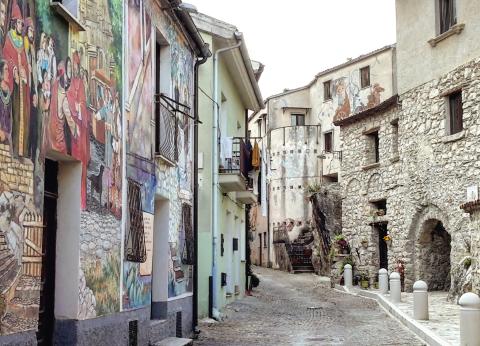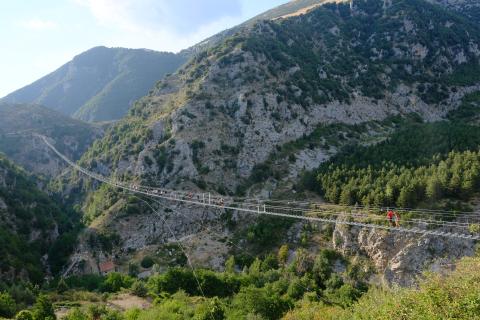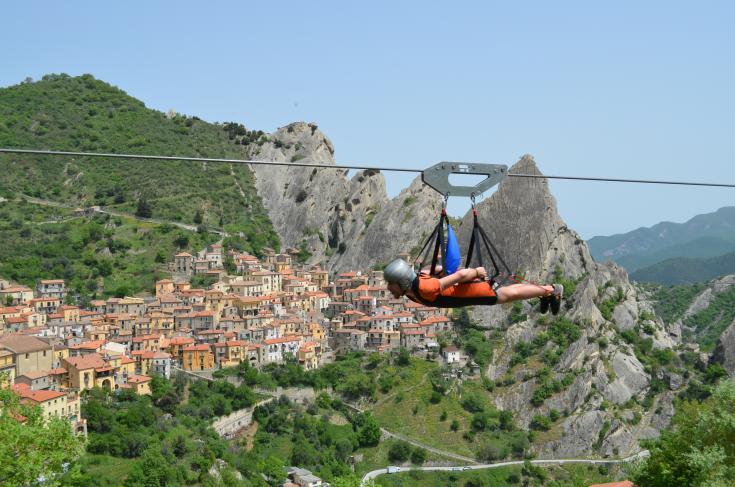Basilicata: 6 Good Practices for Sustainable Growth
In their first stakeholder workshop, our partners and stakeholders in Basilicata identified and discussed a range of good practices for resilience. These good practices are categorized into three main areas, each addressing unique aspects of community and regional development.
Here's an in-depth look at these categories and the practices they encompass.
Processes Activated by Institutional Structures Supported by Local Communities
- In 2008, Pietrapertosa and Castelmezzano, built the world’s longest zip line, the Flight of the Angel, transforming the once unknown area with less than 2000 inhabitants into a major tourist attraction. This move not only drew attention but also instilled a spirit of investment among the locals, who eagerly developed various tourism services. The initiative exemplifies successful between public-private collaboration and the provision of a competitive tourism system filled with attractions such as paths, climbing walls, and via ferratas, as well as private ventures like b&bs, restaurants, and equipment rentals. This synergy has significantly contributed to the area's resilience and economic growth.
- Sant'Angelo Le Fratte, a small town with 1400 inhabitants in Potenza, is renowned for its public art initiatives that have transformed it into a widespread museum, attracting over 100,000 visitors each year. Initially led by the public administration, the initiative later saw active participation and support from citizens, leading to the creation of numerous jobs and new businesses in the hospitality sector. This successful model was replicated in the neighboring villages of Satriano and Savoia di Lucania. Together, with over 400 murals that continue to grow through artistic residencies, these villages have become the most painted valley in Italy.
Image

Processes Arising Through Active Participation of Citizens
- In Accettura, a village with 1600 inhabitants in the province of Matera, a community cooperative formed by more than 70 residents takes charge of managing the museum, cinema, and other public structures, the woods and municipal assets within the Park of Gallipoli Cognato, as well as social and health services. This demonstrates a community welfare model where citizens actively participate in both the production and usage of goods and services, highlighting the significant role of community involvement in the management of local services and assets to enhance the development and resilience of rural areas.
- Since 2015, Castelsaraceno, a rural community of 1350 in Potenza, has actively engaged citizens in identifying development strategies through co-planning and community engagement. This collaborative effort led to the creation of a community map and a co-design plan, resulting in impactful actions such as:
- The Borgo Fiorito project encouraged neighborhood care and launched an association promoting workshops in wood, ceramics, and planting, involving families in organization and implementation.
- The Pastoral Museum, leveraging modern technology, offers an immersive journey into the village's rural past, showcasing its primary economic activity.
- The Integration Reception System Project (Sai) has welcomed 20 refugee families, integrating them into the community and contributing to demographic growth.
- The creation of a naturalistic/sports attractor, the Tibetan Bridge, opened in 2021, drawing over 60,000 visitors annually, creating jobs for 23 people, including Sai guests, and fostering the establishment of new b&bs, cafeterias, restaurants, and more.
Image

Processes Developed with External Actors but Beneficial to the Community
- Aliano, a village in Matera's hinterland with 857 inhabitants, has embraced digital transformation as a means to attract external investments and create new job opportunities, particularly through the concept of "Southern Working." By digitalizing the village, Aliano has become appealing to external companies. Notably, the Dutch multinational Randstad, specializing in human resources, has established a presence here, offering about fifty job openings in Basilicata. This initiative has not only created jobs for the locals but also attracted employees from outside the region, showcasing the village's potential as a hub for economic development through digital technology.
- Irsina, a town in Matera's hinterland with about 4,000 residents, today welcomes over 300 foreigners, including English and American pensioners, and migrants from 12 different countries. This interest is due to its strategic location near Puglia's main transport infrastructures (airports and railways), its favorable climate, and the affordable cost of properties compared to Puglia. Following the arrival of these foreigners, local politics spent efforts to attract more through various promotional actions, emphasizing the town's beauty and quality of life. As a result, Irsina's population and economic activities have expanded, notably in the food, wine, and tourism sectors.

